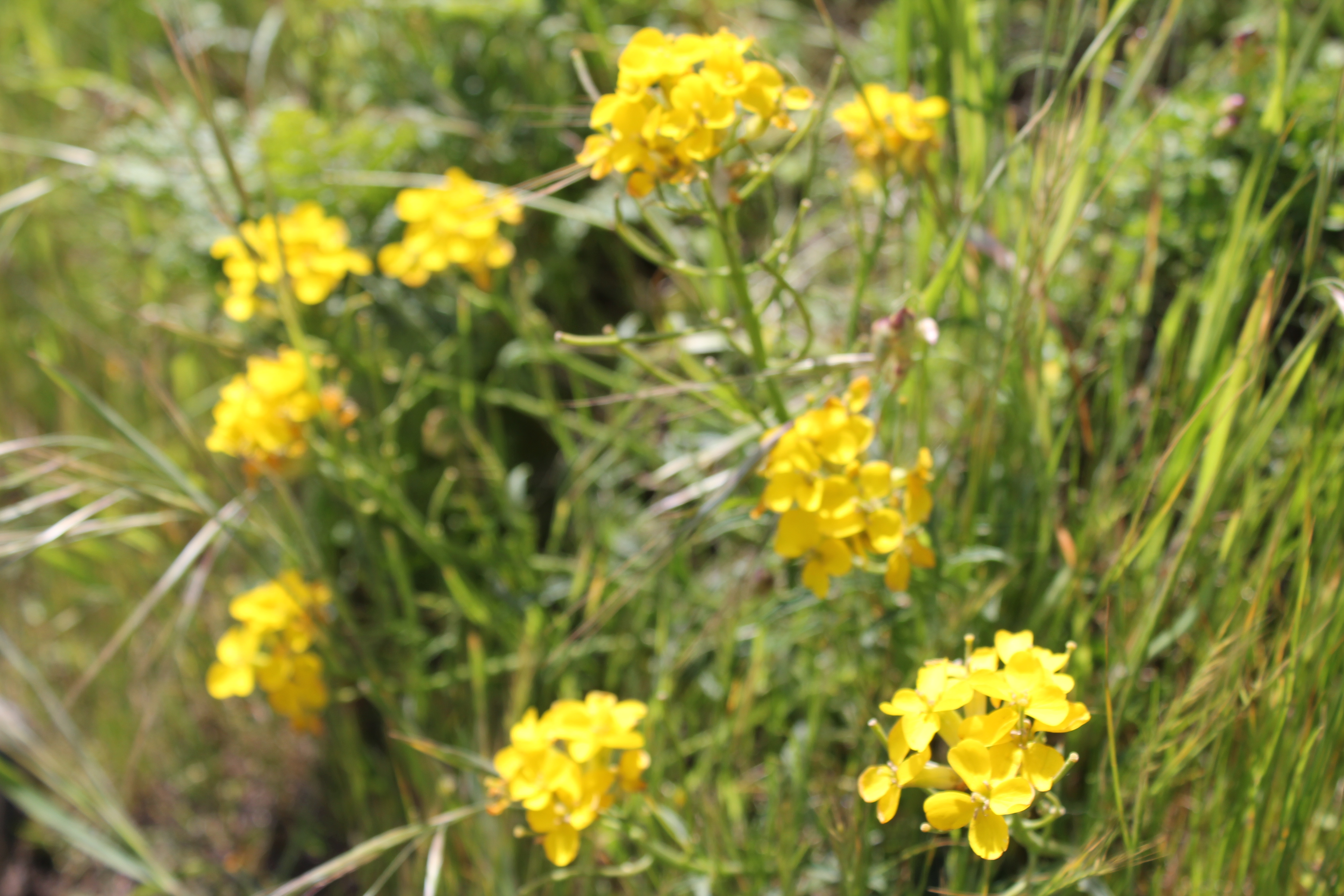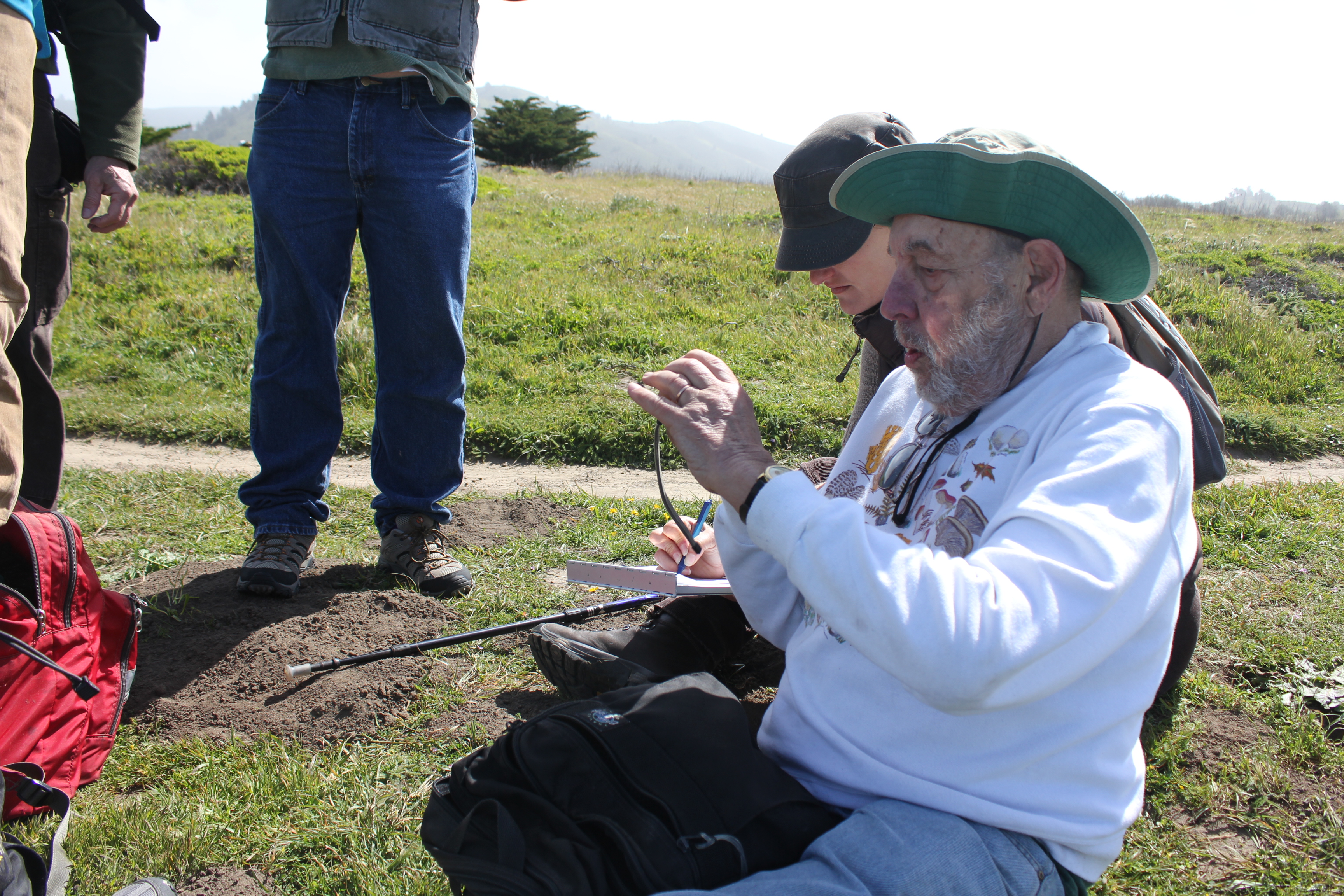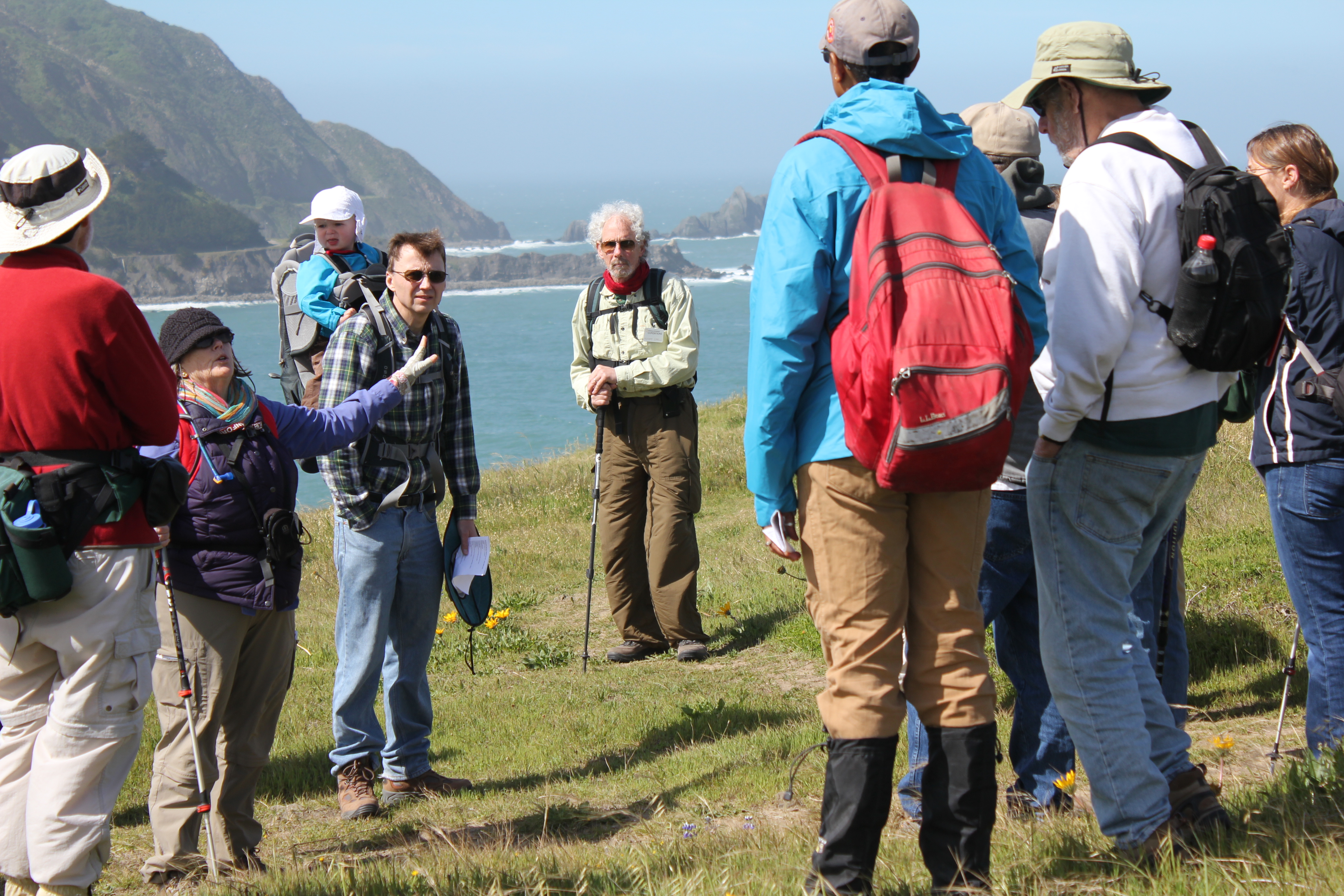
Franciscan wallflowers ((Erysimum franciscanum), a rare native plant that grows along the coast between Sonoma and Santa Cruz
Although the term “biodiversity hotspot” conjures up images of steamy rain forests and exotic South Pacific islands, if you live in California, you have one right outside your door. California is the most biodiverse state in the U.S, ahead of even Hawaii. Biodiversity isn’t just a count of the number of species — it also reflects the abundance of those plants.
We have somewhere around 6,000 documented native plants. Many of those are rare plants, some with less than a dozen known specimens. With human development taking big bites out of the landscape, much of that biodiversity is threatened. More than 75 percent of the state’s habitat has already been lost.
The California Native Plant Society is working to protect what’s left of the plants, but in order to do that, its members have to catalogue them — describe their lifecycle, range and growing conditions — and keep the information current. For the 3,500 records in CNPS’s database, more than half of them have records more than 20 years old. In order to speed up that process, CNPS started the California Rare Plant Treasure Hunt four years ago, in 2010. This time of year, the treasure hunters are gearing up for their busy field season, taking advantage of the burgeoning plants that pop up in spring display after the winter rains. Although it was a dry winter, they’re still documenting as many plants as possible.
Expert botanists lead teams of volunteers to document rare, often threatened and endangered plants. The botanists who lead the expeditions can train volunteers to recognize rare plants and help with tricky identifications. Volunteers are as varied as the plants they’re studying. They include retirees, outdoor enthusiasts and people who want to learn more about botany. There are day hikes within a short drive of cities and two- and three-day overnight camping trips to more remote areas.
They’re hoping to map the enormous swaths of the state that haven’t been well studied. Sometimes it takes professional botanists working for national, state and regional parks decades to get back to a specific spot to see how the plant life has fared over the years. Experts estimate that some areas, like the southeastern deserts, have only had about 10 percent of their plant life remains undescribed, meaning they don’t have a name yet. Plans for solar and wind farms threaten to wipe out acres of those plants before they can be named and counted. That threat was a part of the motivation to start the RPTH in 2010. “They really can’t get protection as a rare spcies if they’re not described,” points out Danny Slateky, project coordinator for the Rare Plant Treasure Hunt. “The rate at which they’re proposing development is astounding,” he said.
The program is funded by various grants, the newest of which is a Wilderness Stewardship Challenge grant from the National Forest Foundation to catalog plants in the Ventana Wilderness in Monterey County. The area is part of the Los Padres National Forest, a nearly 3,000-square-mile forest that reaches from Ventura County in the south to Monterey County in the north. The forest has only one botanist —who lives in the southern region and rarely makes it up to Monterey and the Ventana Wilderness.
The Treasure Hunt teams will be focusing on the part of the forest that suffered massive fires in 2008. Even five years later, the area is still feeling the repercussions. The botanical teams will not only document rare plants in the area, they’ll be observing how plants in the area responded to the fire. Botanists know many native plants thrive in response to the fire and they want to use this large fire to document this fact. “We want to get a handle on how the fire is affecting the rare plants,” said Slakey.
I joined one of the treasure hunts in the Bay Area on a blustery Saturday earlier this month. We hopscotched between three different sites along the San Mateo Coast. The Santa Clara Valley Chapter of CNPS often folds in rare plant surveys into larger field trips meant to introduce people to native plants. Toni Corelli, botanist and Rare Plant Chair for San Mateo County, led a troupe of about 20 hikers, but at key points at each site, a crew of 3 or 4 treasure hunters peeled off and documented several rare plants: Franciscan wallflowers (Erysimum franciscanum) at Rockaway Headlands, Harlequin Lotus (Hosackia gracilis) and Coast Yellow Leptosiphon (Leptosiphon croceus) in Moss Beach and Rose Leptosiphon (Leptosiphon rosaceus) at Pillar Point Bluff. The documented three of the four, but will have to return to survey the rarest of them, the Coast Yellow Leptosiphon. The last remaining cluster only grows in a small patch of grass in Moss Beach about the size of a one-car garage. Corelli’s flickr stream has gorgeous photos of all of four plants.
Other areas where Rare Plant Treasure Hunts are planned this year include the Bay Area, San Diego and San Bernardino Counties. In the shadow of the spectacular wildflower displays on California’s rolling hills and meadows this spring, the volunteers of the Rare Plant Treasure Hunt are racing against the clock to get a count of as many as they while they still can. If you’re interested in joining the search, check out the group’s website here: http://www.cnps.org/cnps/rareplants/treasurehunt/
Stay tuned for a slideshow of my day looking for rare native plants on the San Mateo Coast!

